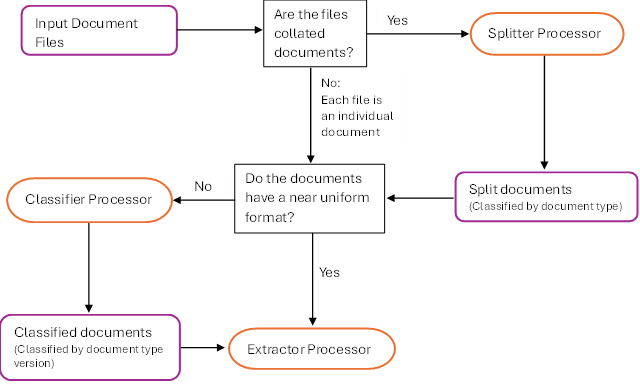Google Document AI Workflow
The first step of the OGRRE Workflow involves identifying how the documents of the Input Document Files are stored. This includes determining what the file format is, how many documents are in each file, how many types of documents, and how many variations of each document type.
Because the OGRRE Workflow relies on Google Document Ai the Input Document File will need to be in one of the file formats supported by Google Document AI Extractor Processors which are JPEG, JPG, PNG, BMP, PDF, TIFF, TIF, and GIF additionally to ensure the best accuracy of the extracted text, Extractor Processor's OCR component Google recommends, "document scans should be a minimum of 200 dpi (dots per inch). 300 dpi and higher," since the OCR accuracy is affected by the resolution, font size, text readability, and image quality. https://cloud.google.com/document-ai/docs/file-types
If the Input Document Files are collated (multiple documents within each file), a Splitter Processor is used to identify the boundaries between documents and when the collated document files also contain multiple document types the Splitter Processor is used to simultaneously classify the split documents by document type.
If the Uncollated Input Document Files include multiple document types and/or large variation between versions of a document type, a Classifier Processor is used to classify each document into versions of a document type. For Split documents that are already classified into document types, for each document type that have large variation between versions, a Classifier Processor is used to classify the document type into versions of that document type.
Finally for each document type version in the Input Document Files a unique Extractor Processor is used to extract the text from the document.

Input Document Files
When using the Google Document AI User Interface, the Input Document Files can be imported to a processor in bulk from the Google Cloud Storage Buckets or individually from Local Storage.
The location within the different processor types for importing document files varies and will be identified in the sections relating to each processor type.